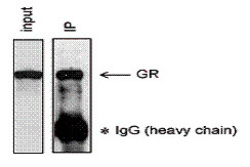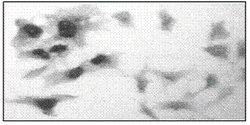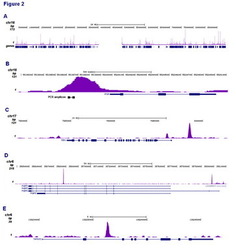Antibody data
- Antibody Data
- Antigen structure
- References [0]
- Comments [0]
- Validations
- Western blot [1]
- ELISA [1]
- Immunoprecipitation [1]
- Immunohistochemistry [1]
- Other assay [2]
Submit
Validation data
Reference
Comment
Report error
- Product number
- TA347252 - Provider product page

- Provider
- OriGene
- Product name
- Mouse Monoclonal GR Antibody
- Antibody type
- Monoclonal
- Description
- Mouse Monoclonal GR Antibody
- Host
- Mouse
- Conjugate
- Unconjugated
- Epitope
- NR3C1
- Isotype
- IgG
- Antibody clone number
- NULL
- Vial size
- 50 µg
- Concentration
- 1.0 ug/ul
No comments: Submit comment
Supportive validation
- Submitted by
- OriGene (provider)
- Main image

- Experimental details
- WB using the antibody against hGR. Figure 4B . WB analysis of extracts from 300,000 HeLa cells with the antibody against hGR (concentration 1 ug/ml).
- Validation comment
- WB
Supportive validation
- Submitted by
- OriGene (provider)
- Main image

- Experimental details
- Sandwich ELISA The specificity of the antibody against hGR was assessed by sandwich ELISA. Figure 3A: schematic representation of the sandwich ELISA with the antibody against hGR. Figure 3B: ELISA results using the antibody against hGR at a concentration of 0.5 ug/ml. The figure shows an ELISA signal which is proportionally increasing with increasing amounts of recombinant hGR.
- Validation comment
- ELISA
Supportive validation
- Submitted by
- OriGene (provider)
- Main image

- Experimental details
- Immunoprecipitation using the antibody against hGR The glucocorticoid receptor was immunoprecipitated from HeLa cell extracts ( 5 million HeLa cells in 100 ul IP reaction solution) using 5 ug of the antibody against hGR. The IP was followed by WB analysis as described above.
- Validation comment
- IP
Supportive validation
- Submitted by
- OriGene (provider)
- Main image

- Experimental details
- Immunohistochemistry and immunofluorescence using the antibody against hGR Figure 5 Immunoreactivity of the antibody against hGR in rat CA1 neurons of hippocampus. The antibody was used at a concentration of 2.5 ug/ml. Figure 6 COS-7 cells transiently overexpressing human GR were labeled with the antibody against hGR followed by a biotinylated secondary antibody and peroxidase-labeled avidin. The antibody was used at a concentration of 2.5 ug/ml.
- Validation comment
- IHC
Supportive validation
- Submitted by
- OriGene (provider)
- Main image

- Experimental details
- ChIP on sheared chromatin from 3.5 million HeLaB2 cells: cells treated with GR ligand triamcinolone acetonide (TA) for 4 hr prior to harvesting. The 36 bp tags were aligned to the genome using the ELAND algorithm. Image shows eak distribution along the complete sequence of chromosome 16 as well as the MT2A positive control gene (B). The position of the PCR amplicon is also indicated. C, D and E show the results for the known GR target genes PER1 on chromosome 17 and FKBP5 and TNFAIP3 on Chr 6.
- Validation comment
- Assay
- Submitted by
- OriGene (provider)
- Main image

- Experimental details
- ChIP assays using HeLa cells: cells were treated with ethanol (EtOH, negative control) or triamcinolone acetonide (TA) for 4 hr prior to harvesting. ChIP was performed using sheared chromatin from 3 million cells and 5 ug ab. QPCR primers were for the human metallothionein promoter (hMTIIA) and for exon 2 of the human myoglobin gene (hmyo ex2), negative control. Image shows recovery (the relative amount of IP'd DNA compared to input DNA) & occupancy (ratio +/- control target): demonstrate the occupancy of metallothionein IIA promoter by GR.
- Validation comment
- Assay
 Explore
Explore Validate
Validate Learn
Learn Western blot
Western blot